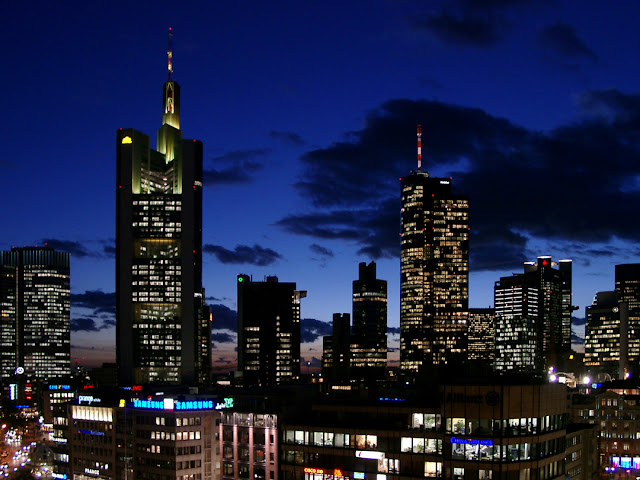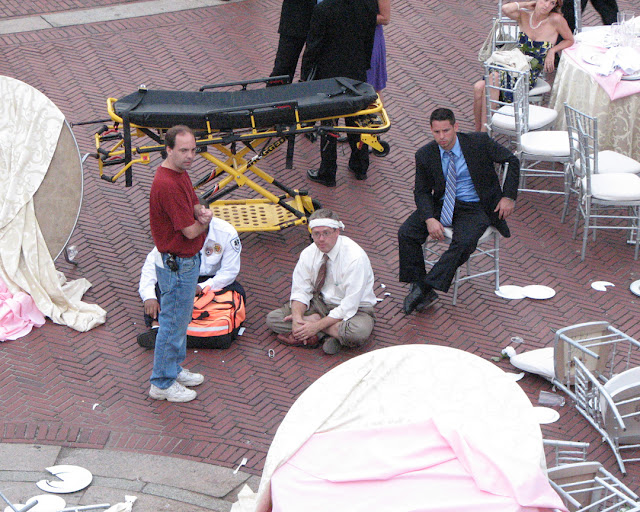Wednesday, September 30, 2009
Tuesday, September 29, 2009
Monday, September 28, 2009
At the MoMA
Abby Aldrich Rockefeller Sculpture Garden
Museum of Modern Art
West 53rd Street
New York, September 2007
Sunday, September 27, 2009
Tramway des Maréchaux
Tramway Line 3
Boulevard Jourdan
Quartier du Parc-de-Montsouris, 14th arrondissement
Paris, July 2009
Saturday, September 26, 2009
Friday, September 25, 2009
Thursday, September 24, 2009
Wednesday, September 23, 2009
Sans soleil
Parasol without sun
Rue Frédéric-Sauton
Quartier de la Sorbonne, 5th arrondissement
Paris, July 2009
Tuesday, September 22, 2009
Monday, September 21, 2009
Cleaning Lady
Wax cleaning lady
Neue Staatsgalerie (New State Gallery)
Konrad-Adenauer-Straße
Stuttgart, March 2004
Sunday, September 20, 2009
Saturday, September 19, 2009
Place Colette
Musicians playing in front of the “Comédie-Française”
Place Colette
Quartier du Palais-Royal, 1st arrondissement
Paris, July 2009
Friday, September 18, 2009
Thursday, September 17, 2009
Beau Brummell
George Bryan “Beau” Brummell by Irena Sedlecká, 2002
Jermyn Street
London, January 2007
“George Bryan ‘Beau’ Brummell was a tastemaker and social influencer of men’s fashion in Regency England. Born in 1778 to a middle class family, Brummell dreamed of joining the social elite. He was, at one time, friends with the Prince Regent (the future King George IV). In the 19th century, his fashion sense would greatly influence how the upper-echelons of society would dress, moving away from the ostentatious garments of the 18th century to instead embrace precise tailoring and understated elegance. This style was epitomized, above all, by the meticulously knotted cravat (which is a scarf-like necktie).” (Beau Brummell Statue, Atlas Obscura)
Wednesday, September 16, 2009
Tuesday, September 15, 2009
Monday, September 14, 2009
The Economist Building
The Economist Buildings by Alison and Peter Smithson, 1964
St James's Street
London, January 2007
“Grouping of three towers of varying heights arranged around a raised public plaza, home to ‘The Economist’ magazine. The main fifteen-storey tower is set back from St. James Street and complimented by a four-storey bank and an eight storey residential block. The bank respects the lines of the existing buildings on St. James Street. The plaza is raised about one storey and accessed by an integrated staircase and ramp from the street level. Each building is concrete framed, expressed with bold uprights running from the top of the buildings to meet the floor. The ground level is recessed occasionally and canted at the corners. The Econimist Building’s Portland stone facades, grey colours, splayed corners and projecting ribs demonstrate the traits of the International Style. The building was granted Grade II listed status in 1988.” (The Economist Buildings, AJ Buildings Library)
Sunday, September 13, 2009
Justerini & Brooks
Justerini & Brooks
St James's Street
London, January 2007
“Justerini & Brooks Ltd. (J&B) is a fine wine and spirits merchant founded in St. James's in 1749, originally to provide wine and spirits to the aristocratic households of London. Is mostly known for their J&B Rare Scotch whisky. The firm has been a supplier to every British monarch since the coronation of King George III in 1761. It sells to private collectors, hotels, and restaurants across the United Kingdom. Justerini & Brooks is owned by multinational Diageo. Justerini and Brooks was founded in 1749 by Giacomo Justerini from Bologna, the son of a distiller, and English investor George Johnson. Together, they founded the wine merchants Johnson & Justerini. In 1760, Justerini returned to his native land after selling the business to Johnson. Johnson continued to grow the business, naming his grandson, Augustus, as a partner, and building relationships with European suppliers from Bordeaux, Cadiz, Mayence, Reims, Genoa, Dijon and Palermo. The firm received its first Royal Warrant from King George III the next year.” (Justerini & Brooks, Wikipedia)
Saturday, September 12, 2009
Friday, September 11, 2009
Montmartre Busker
Singing “Eagles” tunes in Paris
Montmartre
Quartier de Clignancourt, 18th arrondissement
Paris, July 2009
Thursday, September 10, 2009
Wednesday, September 9, 2009
Target House
Target House by Rodney Gordon, 1984
St James's Street
London, January 2007
“Target House is a modern commercial building designed by British modernist architect Rodney Gordon (1933–2008) of Tripos Architects. It is located at 66 St James's Street, London, at the junction with St James's Place. The building was designed in 1979 and completed in 1984. It replaced Map House, designed by R.J. Worley. The anodised bronze and aluminum cladding of the building made it a departure from the "brutalist" concrete designs more usually produced by Gordon.” (Target House, Wikipedia)
Tuesday, September 8, 2009
Monday, September 7, 2009
Golden Lizard
Golden lizard along the Seine
Port des Champs-Élysées
Quartier des Champs-Élysées, 8th arrondissement
Paris, July 2009
Sunday, September 6, 2009
Saturday, September 5, 2009
Friday, September 4, 2009
Thursday, September 3, 2009
Wednesday, September 2, 2009
Tuesday, September 1, 2009
Travellers Club
Travellers Club by Charles Barry, 1832
Pall Mall
London, January 2007
“The Travellers Club is a private gentlemen's club situated at 106 Pall Mall in London, United Kingdom. It is the oldest of the surviving Pall Mall clubs, established in 1819, and is one of the most exclusive. It was described as ‘the quintessential English gentleman's club’ by the Los Angeles Times in 2004. The original concept for the club, conceived by Lord Castlereagh and others, dates from the conclusion of the Napoleonic Wars. They envisaged a club where gentlemen who travelled abroad could meet and offer hospitality to distinguished foreign visitors. The original rules from 1819 excluded from membership anyone ‘who has not travelled out of the British islands to a distance of at least five hundred miles from London in a direct line’.” (Travellers Club, Wikipedia)
Subscribe to:
Comments (Atom)






























